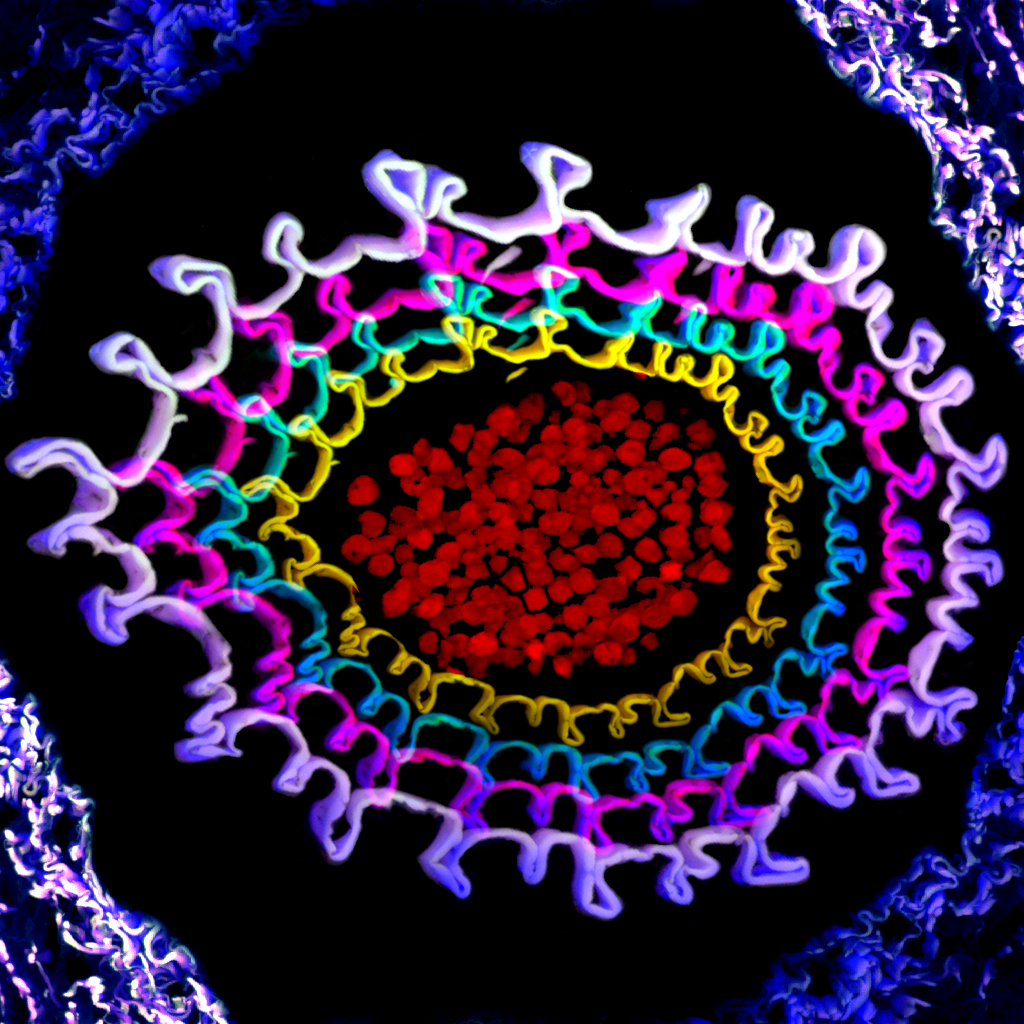The Blood Flow Border Patrol
The intricate network of blood microcirculation in the human body is a closed and complex one. The hierarchy of blood flow in the human body takes blood from the heart to deep organs systems, through arteries that branch out into smaller arterioles and later into microscopic capillaries. Presented here is a pseudo colored montage of images taken and combined from different magnifications that represent a kidney arteriole with blood cells depicted in red. The ability of different blood vessels for nutrient exchange and flow resistance is highly reliant on the thickness of the vessel wall and the pressure of the blood pumping through it. Arteries receive freshly pumped blood from the heart and the thick layers of smooth muscle help it maintain blood pressure. The arteriole wall however, is relatively thinner (~300 times thinner than an artery) but can change vessel diameter to speed up or slow down blood flow depending on chemical cues around cells, allowing for vascular resistance to facilitate nutrient and gas exchange via the capillaries. Blood can flow up to 30cm/second in arteries, but is reduced to 2cm/second in arterioles. Pathologically, changes in arteriole and capillary wall permeability are associated with blood-brain barrier damage and disease!
Artist: Don Pottle. Author: Manav Gupta


